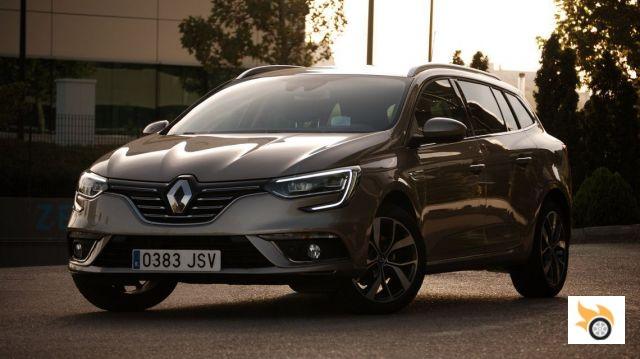Renault España offers this model, which is manufactured in Palencia, for prices starting at just under 18,000 euros and not reaching 30,000 euros even at the top of the range (excluding extras).
The range of engines covers quite a lot, from the timid 90 hp diesel to the 205 hp turbocharged petrol. In terms of equipment, there is practically a Mégane for every pocket, the levels are scaled as follows: Life, Intens, Zen, BOSE, GT Line and GT. We got behind the wheel of the BOSE with the 110bhp dCi engine and six-speed manual transmission. Bear in mind that it's a very well-equipped version and some of the "goodies" are not on the base models.
The Renault Mégane Sport Tourer is one of those models that leave its predecessors far behind, so if anyone is still thinking about the Mégane II estate, or its successor, they won't get a proper image of the Mégane IV estate. One of the overall impressions I have is of having driven a very well made car, at least on the level of a D-segment estate of a few years ago. But we're talking about a C-segment estate, and Renault isn't asking a huge amount for it. In some respects, it even puts a premium competitor to shame.
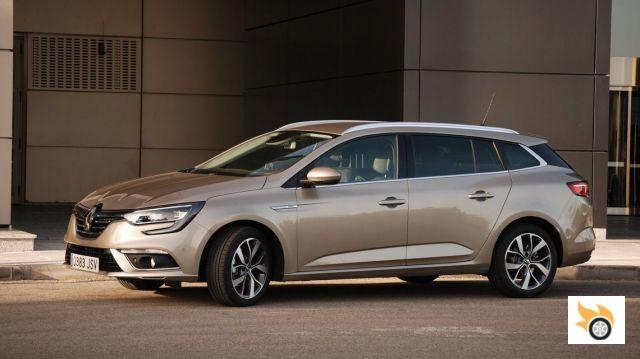
The special features of the Mégane Sport Tourer
Obviously, the main difference compared to the five-door Mégane is the load volume, 580 litres if you take advantage of the lower floor of the boot. It measures 4,626 mm long, i.e. 59 mm longer than the previous model, with only 9 mm corresponding to the increase in wheelbase. Renault has made it longer, wider and shorter. The track increases are substantial, 45mm wider at the front, 39mm wider at the rear, while the height has been trimmed by 58mm (1,449mm). Renault says Mégane's shoulder roominess is class-leading.
Design-wise, it is close to the philosophy of the previous model, but with more modern styling elements. The front and rear lights have a very special signature that makes the Mégane more visible on the road, the roof has the typical faux D-pillar (painted black) and chrome highlights the profile of the windows. The matte-finish roof rails come as standard except on the base model. There is a choice of 11 body colours, although there are some exceptions depending on equipment.
It has a catalogue of wheels from 15″ (steel with hubcaps) to the 18″ of the top of the range. The BOSE has 17″ wheels.
The sporty image of the car is reinforced in the GT Line and GT versions, in the same way that the Premiums do with their S Line, M or AMG packages. In the specific case of the Mégane GT, the image is reinforced by the most powerful engines in the range, as well as specific dynamic settings. The only downside to the design is that you have to be a bit careful when getting out of a rear seat, the roof is a bit low.
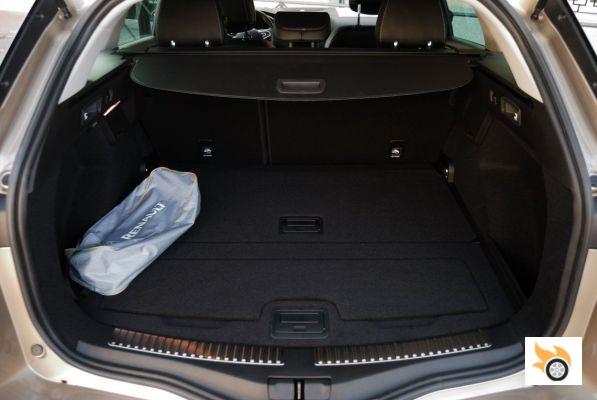
We continue with the trunk, which has its own. It has two loading heights, the upper one is almost flush with the rear seats when they are folded down. Just apply a minimum of force on the handles on each side, and the seats open quickly and without contortionism. The resulting load volume is 1,695 litres. If you fold down the passenger seat, you can carry an object up to 2.7 metres long, better than some vans.
On the sides of the trunk there are some holes, at the height of the wheel arch. We can also hang bags on hooks near the folding handles, and power an electric consumer with the 12-volt socket on the left. If we want, we can divide the cargo space in two, placing perpendicularly one of the covers to act as a barrier. The upper curtain, if it is not necessary, can be stored in a specific place for it.
In the case of the car tested, BOSE level, where the spare wheel would go there is a huge bass box that eats up a lot of space, where the puncture repair kit is also located. As José Antonio said a few days ago, you don't need an SUV to have space and versatility, but to choose the right car for every need. The car could have been finished off with an electric opening/closing system, and with a foot movement, they would have made it nickel and dimed.
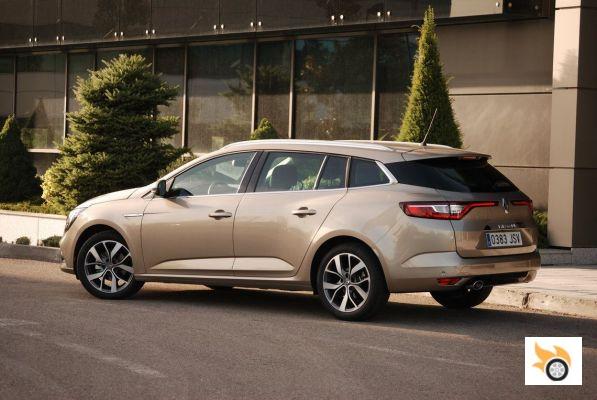
Familiar engines and no surprises
The range of engines consists of turbocharged, petrol and diesel engines. The petrol range includes the basic 1.5 dCi with 90 bhp and 110 bhp. The latter can be combined with an EDC automatic transmission or a KERS-type semi-hybrid system (dCi 110 Hybrid Assist) that improves engine response during acceleration by harnessing energy previously recovered from a 48-volt battery. Not to be confused with a hybrid to use, its intervention is very timely and fast, like that of the Formula 1 (saving the distances).
At an intermediate level is the 1.6 dCi 130 hp, and later will come the twin-turbo 165 hp (GT only). The 1.2 TCe gives 100 or 130 hp, and the 1.6 Turbo gives 205 hp (GT only). The two most powerful versions opt for the EDC automatic transmission. Curiously, the 130bhp TCe is very slow to accelerate: more than 11 seconds to reach 100km/h, almost as fast as the 110bhp dCi. According to Renault, the 1.2 TCe "offers the performance of a 2.0-litre naturally aspirated engine", because it will be an oldie, the 2.0 16v had much more oomph in the Mégane II, with an almost identical weight. I can vouch for that.
In general, the Mégane doesn't have a blazing performance with any of its engines, and it's not exactly heavy.
The 110 hp version we tested has all the punch a mid-range car should have, and for those who aren't in a hurry to get everywhere, it doesn't need any more. Driving at legal speeds and without abusing the accelerator it's easy to go under 5 l/100 km. The engine is well insulated, and the noise level depends on the selected driving mode, as well as its response. Those who want a little more power will have to look at least at the 130 hp 1.6 dCi, which is still not a bullet, but 320 Nm are noticeable compared to 270 Nm.
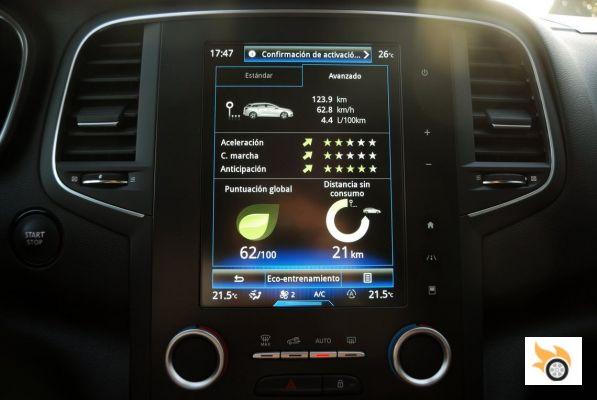
A car with feelings and moods
One of the Mégane's most remarkable gadgets is the Multisense system (Zen trim upwards), which changes various aspects of the car to give the driver a different feel depending on what they're after: Neutral, Comfort, Eco, Sport and Personalised. In the Mégane, the suspension behaviour doesn't change, which is noticeable in the Talisman. Normal, the latter is more expensive.
When the ECO mode is selected, the rev counter disappears and the instrumentation is set in a way that helps to reduce fuel consumption. The accelerator becomes very sluggish, and occasionally gives the feeling of having lost a lot of power: by pressing the pedal all the way down -activating the kick-down- the horsepower wakes up. This, which seems silly, helps to reduce fuel consumption, as you can't accelerate hard without wanting to. If the consumption peaks are eliminated, the average goes down, it's a matter of course.
The Sport mode enhances the sound of the engine in a very subdued way, and in a more coherent way than the ASC system used by Lexus (a disaster, all things considered). The steering feels a little less power-assisted, and the rev counter takes a lot of prominence in the central display. You also notice that the throttle is more sensitive. In Comfort mode the instrumentation also changes, it starts to massage the back (electrically adjustable seat)... Neutral tends to a middle ground, and personalized is what it seems: a setting more in line with our preferences.
It's a pleasure to drive it, you find a suitable posture to carry it on the spot. Multiple information are in sight, to the point of becoming overwhelming so much data with the digital dashboard. Each instrumentation display has specific indicators, such as compass, engine power/torque, instantaneous consumption or digital speedometer. Take a look at the images above these lines. Depending on the version, it can also have a HUD, which represents the most important information without distracting the driver or taking his eyes off the road.
The R-Link screen is 8.7″ and is the largest in the segment. There is a smaller size for entry-level models, in landscape format.
You can read in a simple sweep the next navigation indication, distance in seconds to the preceding vehicle, current speed limit, fixed radar warning, speed, revs/"eco" level, what's playing, temperature, pending warnings... As I say, more than one driver may miss a "bare-bones" mode in which only the essentials are shown, as the Saab had (night mode or Nightpanel).
However, it seems to me a system that could be improved. To read the information on the HUD I have to strain my eyes a bit, because it is reflected on a glass in between. I prefer the system of other models, in which the windshield itself reflects this data, and there is no need to make any forced focus. The HUD seems to me a great invention and is one of the things I value most in my particular car, but it is one of those that do not have intermediate glass, the projection of the windshield is a reflection of a screen hidden in a cavity of the dashboard.
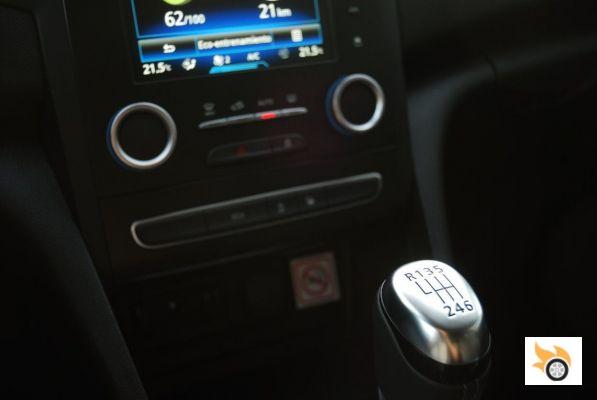
I also think there are too many buttons. I went a bit crazy to find the buttons that activate the speed limiter or regulator: next to the electric parking brake, to my right. The position doesn't seem the least bit coherent to me. Besides, the steering wheel controls don't exactly control everything, there's still a satellite behind the steering wheel, on the right hand side, which can be operated if you know by heart where each button is and what it's for. Anyone who has driven a Renault in recent years will have no difficulty with this.
You can tell that the manufacturer has made a great effort to improve the ride quality, as the car absorbs noise and road imperfections very well. For drivers who appreciate a certain amount of insulation, they'll love it. And this has been achieved without the driver feeling completely disconnected from the road, as in the Mégane II. It's a fine middle ground, comfort, but with a sense of reality.
On the other hand, the car's behaviour, without being very sporty, is neutral enough to convince anyone. I didn't have the opportunity to put the car in serious trouble on the test route, but taking a couple of deliberate bends at a speed well above the legal speed, the Mégane ST didn't even bat an eyelid. The GT, with directional rear suspension and other suspension settings, brakes... doesn't exactly look like it's going to disappoint. The feeling of poise and comfort is constant.
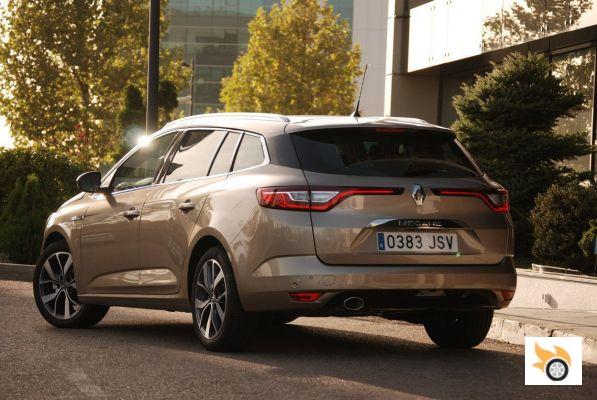
It's worth considering for its technological solutions: R-Link tablet with apps, Multisense, full LED headlights, digital dashboard, HUD, 4Control (rear wheel steering), electric seats with massage function, semi-automatic parking... However, the active safety systems don't quite convince me. For example, the lane departure warning -without flashing the turn signal- is a complete pain in maximum sensitivity mode. I can almost assure you that you can drive drunk with that preference, it anticipates any footfall on the lines. Don't take what I've said at face value!
The camera-based safety systems are Lane Departure Warning (LDW), Safety Distance Warning (SDW) and Traffic Sign Recognition (TSR). I love this last one, you can program the new limit in the voluntary speed limiter -save the redundancy- so you don't tempt fate with radars. Of course, it warns about the fixed ones, and better than almost any other car on the market. Thanks, Coyote!
The camera is also used to detect street lights or lights of other vehicles (AHL) to automatically switch between high and low beams. Front radar can maintain cruising speed depending on traffic (ACC) or automatically brake if necessary (AEBS). The blind spot warning (BSW) works well, I wish the grandfather who almost smashed me against the median had had it in his old compact; five seconds giving him the horn and he didn't notice... Sorry, I'm going off course.
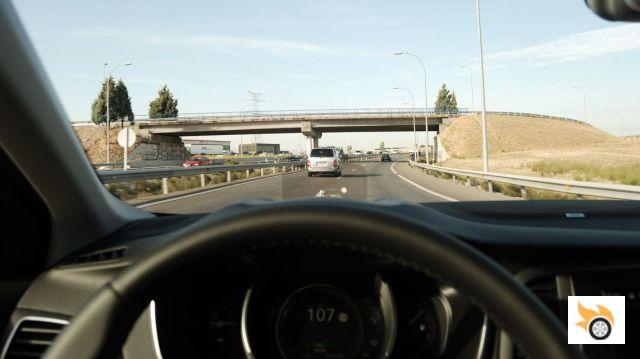
The effectiveness of these safety systems is conditioned by the speed, some of them don't work at more than 150 km/h.
I missed the fact that the steering automatically corrects itself if you leave the lane unintentionally; the assistant warns you with a sound very similar to the one made by the tyres when you step on the raised lines that limit the road on some roads. In some competitors the driver may be more aware of that, the warnings are more intense. What about the possible fatigue warning? It's missing, it didn't cost so much to program it!
All in all, lights and shadows included, it's a car that conveys a very good image of the modern Renault, and that allows you to turn the page with respect to recent and not so recent models. I had a hard time finding faults, I had to be very attentive. For example, when depressing the clutch just before stopping the car, going from second gear to neutral, you can feel a slight jolt coming from the engine compartment. The engine stop and start (Stop&Start) is not, it is another component. By the way, the S&S works very satisfactorily.
Padded dashboard, a tremendous sound quality (with the BOSE speakers you can turn the volume like in a disco without vibrating panels or mirrors), a pleasant feel of the controls, comfortable seat... these are points that add up and add up. There is not so much distance with respect to the Talisman, which is a car positioned above. Otherwise, a very good car from many points of view. It has more comfort equipment than the Mercedes-Benz E-Class had at the beginning of the decade, in a reasonably priced car. Isn't it wonderful?
